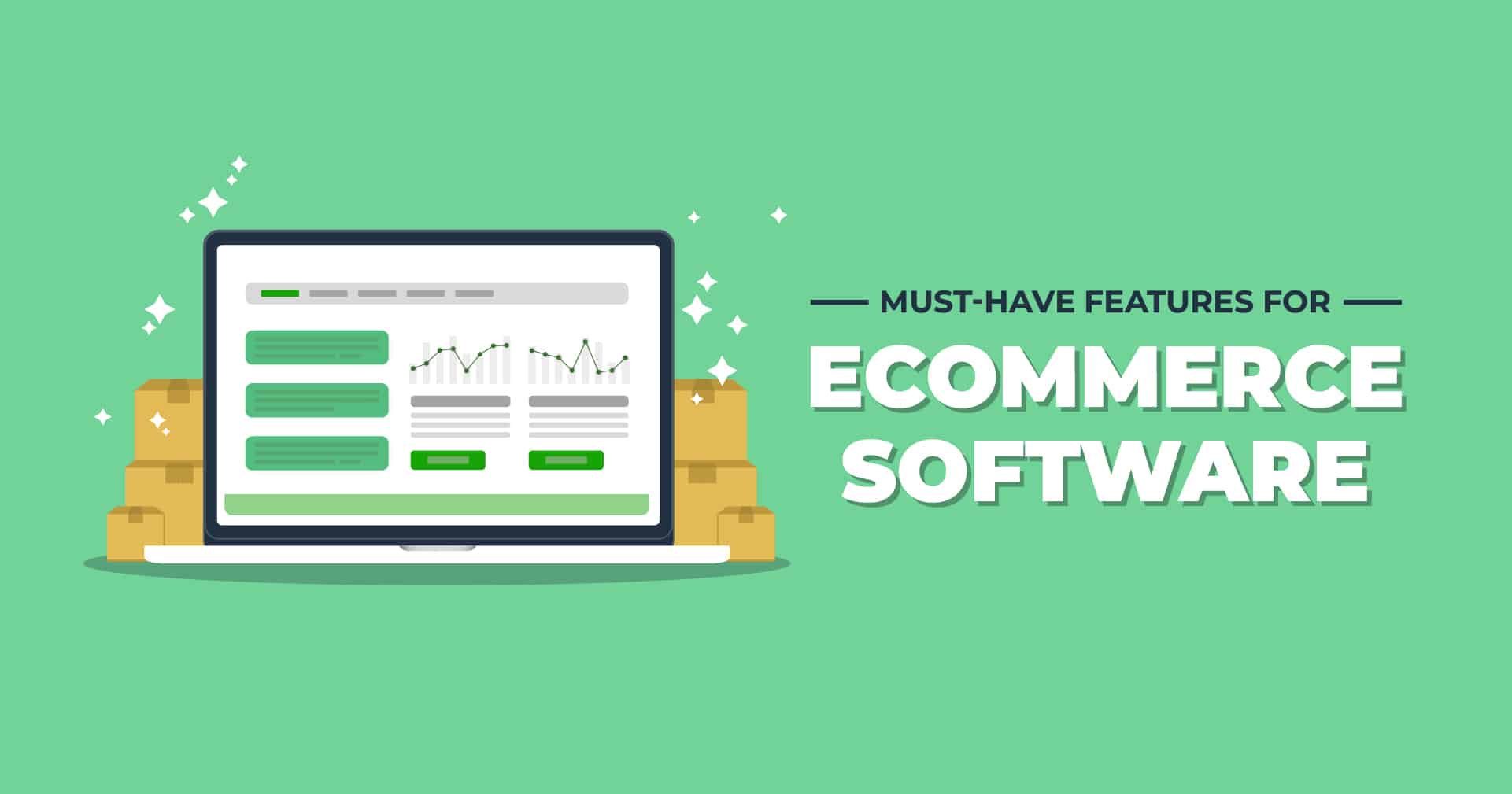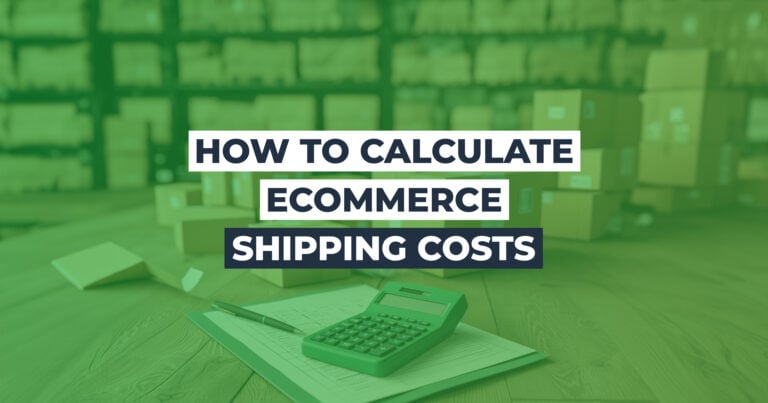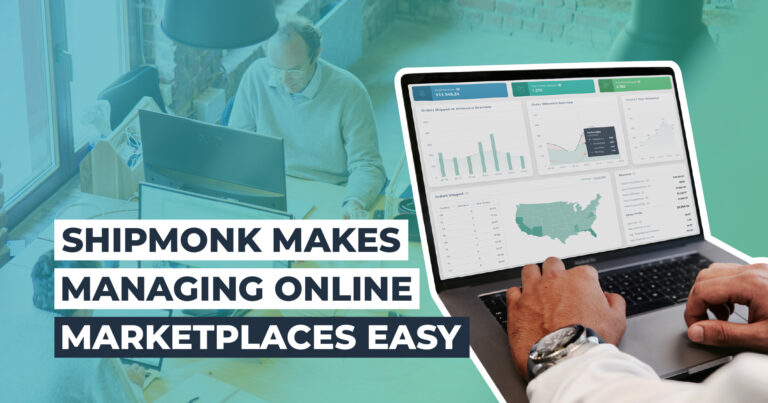Must-Have Features for Ecommerce Software
Every ecommerce store relies on an assortment of vital components to survive and thrive, but ecommerce software is the heart of all these elements. It allows the blood of your business to flow smoothly and gives you room to breathe so you can grow.
Regardless of the size of your ecommerce brand, it doesn’t hurt to periodically reevaluate if the software tools you’re using are giving you everything you need. Enter this article. Let’s look at the top 10 areas of ecommerce software that are crucial to your ecommerce store, and provide an overview of what to look for within each aspect to maximize growth through efficiency, accuracy, and visibility.
1.) Order Management
This is the most important element of ecommerce software. Every part of the fulfillment process from BUY to delivery is critical and the platform responsible for those orders needs to be able to track them at every stage while keeping you updated with complete visibility.
To start with, quality checkpoints that are manageable through ecommerce software allow business owners to ensure orders are being fulfilled with the utmost accuracy, and can send up alerts if there is any issue. Furthermore, order editability within the software means an ecommerce store can pause, add to, or even cancel an order if new info arises from the customer or the carrier. That fully maximizes your communication potential, and simplifies certain aspects of returns management before orders get too far along.
In addition to real-time updates from the “order processed” to the “order handed off to customer” stages, reporting tools are key for order management within ecommerce software. In order to improve, you need to learn; and in order to learn, you need information in your corner. Whether your order fulfillment is running seamlessly on all fronts or there are some obvious issues, the right ecommerce platform can provide you with S.W.O.T. (Strength, Weakness, Opportunity, Threat) analysis that will help you make your best, most strategic decisions for finetuning your operation through optimal order management.
2.) Inventory Management
There are so many decisions to make when it comes to your ecommerce inventory. How much do I order? How quickly do you need to restock, how should you split your inventory across multiple locations, and of course what kind of inventory ordering system best suits your brand? Some of the most popular ordering models (and inventory valuation methods) being:
Regardless of what type of inventory ordering system benefits your ecommerce needs, and any other decisions you make about how and where to store it, the key element of ecommerce software is that it has the capacity to monitor your inventory in real-time wherever it is so you are always aware of your stock levels and how you need to replenish them. That inventory data needs to be fully transparent, super accessible within the platform, and easy to digest.
If you (as a business manager/owner) have to go on an in-depth hunt for inventory data, you’re using the wrong ecommerce software. If you have to drink a calming tea and sit down for an eternity to understand the inventory data, you’re using the wrong ecommerce software. And if you can’t find out exactly what you have and where at any given time, you’re using the wrong ecommerce software. Overall, any of these three situations are a sign you need a more advanced ecommerce solution.
3.) Warehouse Management
Does your warehouse or fulfillment center utilize different kinds of technology or automation? How much do you know about the efficiency and accuracy those elements bring to the table, and how they work together with fulfillment staff to keep your order flow running smoothly? Ecommerce software should work hand in hand with warehouse technology to optimize the picking, packing, and shipping journey for every order. That means mapping out the best route through the warehouse, passing quality checkpoints to ensure accuracy, and maximizing how orders are put together.
In terms of your warehouse data, with so many online threats, software for ecommerce stores that has built-in protocols, secure servers, and other breach prevention can protect your company and customers at all stages of your brand’s evolution. Additionally, having robust security throughout your ecommerce software’s root code means all valuable information can’t be lost or compromised, and all order tracking and past data will always be safe.
4.) Shipping Management
Cost and speed: the two most important elements of your shipping plan. Every shipping carrier has unique services and rates, and some may work better for your ecommerce brand than others depending on your products (size, weight, perishable, fragile, etc.). Your 3PL software needs to let you adapt your shipping plan based on these factors, as well as the type of shipping service being offered to your customers (2-day, ground, economy, and so on). ShipMonk actually goes one step further with our Virtual Carrier Network that makes your shipping plan carrier-agnostic. That means ecommerce brands aren’t handcuffed to any one carrier and can adapt in relation to prices and supply chain issues. All these factors contribute to a necessary component of 3PL software.
But that’s just the first half of the “shipping management” criteria that is vital to ecommerce software. The other side of this coin is managing items once they have already shipped. Where is the package? What stage in its journey is it in? What checkpoints has it reached? All these answers are only available if your ecommerce platform is on point. And all that info is pivotal because it allows you to keep customers informed on the state of their incoming deliveries and trace packages that may be taking longer than expected or have gone missing. Overall, shipping management as it relates to customer service is rooted in strong ecommerce software.
5.) Returns Management
The logistics of getting an ecommerce product from order to delivery is complex. Ecommerce brands strive to uncomplicate this as much as possible with the help of the right 3PL, software, and strategy. Even if your order management is running at a high level, though, without reverse logistics systems in place your operation can only go so far. Ecommerce software needs the capability of handling all aspects of reverse logistics.
That means being able to track returns, keeping customers informed on return statuses, and real-time updating your inventory at the fulfillment center/warehouse once a return has been received. From there, ecommerce software can (and should) help you handle the return in the best way possible in respect to costs and how your inventory is slotted. Some things that ideal ecommerce software can do in reference to returns management include:
- Automatically inform customers on their return progress.
- Instantly update customers when store credit, an exchange, or a refund has been issued.
- Update you, the business, on the state of the item returned.
- Apply automatic returns processing rules for what to do with merchandise depending on the SKU and the state of return.
- Let you, the business, know about your updated stock levels and inventory capacity.
These different factors can prevent a slew of problems. First, they minimize negative customer experiences by keeping them informed. Second, they can streamline your fulfillment center/warehouse operations by giving clear and automatic direction. Third, and above all, different returns management options through ecommerce software can prevent added costs that occur when returns are not processed in a timely or organized manner and impact your inventory count/storage space.
6.) Order Updates Capacity
Order updates are a critical ecommerce platform capability because they allow you to keep customers informed on the state of orders. Informed customers tend to be happier customers.
So what’s necessary for this to happen? At the very least, customers need to be informed of when an order has gone through/has been processed (that’s the transactional message) and when it will arrive (that’s the expected delivery message). There are, of course, many types of notifications in between that add value, such as:
Shipping Confirmation that includes a tracking number and a link to the tracking website, whether that’s your own website page or a shipping carrier website.
Tracking Notifications that should not bombard customers, but keep them updated on critical checkpoints in a package’s journey. Two important types of tracking notifications for optimal customer experience are notifications about imminent delivery (out for delivery, en route, almost there) and delivery delays (weather issue, unexpected rescheduled delivery).
Delivery Confirmation whereby you, the ecommerce brand, ensure your customer is aware that a package has arrived.
Backorder or Restock Notifications if an item is discovered post-order to be unexpectedly, temporarily out of stock or, conversely, if an item that a customer knowingly purchased in a backorder state has now been restocked and is on its way to being fulfilled.
Points Update Confirmation if the customer belongs to a loyalty or subscription program and the points/perks associated with the most recent order have officially been logged and accounted for.
There are many ways your ecommerce platform can push out these, and other updates. Email is the traditional way. There are plenty of email and marketing platforms like Constant Contact, MailChimp, and HubSpot, which can be connected with third-party apps that your ecommerce software is integrated with, like Shopify, Stripe, and Zapier. SMS text notifications are also a possibility though, which may be preferable if customers ordered on a mobile device in the first place.
***Note – emails and texts can get sent to spam, so even if your ecommerce platform is set up for all of the above, you also want to make sure to provide customers a main area where they can get their order-related information. That will minimize customer support requests, ease the returns process, and make it simpler for them to monitor points, leave reviews, and reorder liked items.
7.) Detailed Data and Reporting
How much inventory do you need to order at a time? When should you order it? These two questions and how you answer them can make or break a business. Choosing wisely really comes down to data, both historical and real-time. In terms of historical records, when ecommerce software provides you with valuable data and reports, your ecommerce brand can make decisions about how much inventory to order for each and every SKU. That allows you to make strategic, cost-effective decisions on a regular basis, and during times of higher stakes. For example, when your ecommerce software provides detailed info on what sold and how fast for peak season, a previous sale, a new product launch, and so on, you can better plan for the next one.
Ecommerce platforms also need to provide access to detailed real-time data. That gives business owners the opportunity to move swiftly to restock when needed and reorder from manufacturers when needed. This prevents backorders and stockouts that can harm your brand and customer relations. Meanwhile, it can prevent premature ordering that will cost you money you didn’t have to spend in terms of inventory and slotting space in your fulfillment center(s).
8.) Integration Capabilities
For ecommerce stores to thrive they need to be reachable to a wide audience base, easy to do business with, and accommodating if issues arise. The key to this is the capacity for integrations. ShipMonk, for example, has 100+ integrations designed to help ecommerce brands grow. Whether you have a small business, something in the mid-market level, or a larger enterprise, these are valuable tools and resources that can help you grow, reach customers, and scale your brand effectively. If your ecommerce software is to support that growth, some types of integrations it should connect with include:
- Marketplaces
- Shopping Carts
- Retailers
- Returns Options
- Branded Tracking
- Package Protection
- Performance Trackers
- Brand Management
- Customer Service Ops
- Email Platforms
- API Tracking
- Shipping Solutions
- Order Processing
9.) Transparency Across the Board
One of the hardest things for any business owner to do is “let go”. By that we mean not feel the need to oversee and micromanage every aspect of your company every minute of the day because you’re worried something will get overlooked. Transparency in ecommerce software facilitates the ability to “let go” by ensuring that everything you could possibly need (every answer, every detail, every point of data) is available and clear.
From how you are billed to where your inventory is to the point every single package is in its journey, transparency in an ecommerce platform key to keeping you operation together, keeping your costs and customer satisfaction in order, and allowing business owners/managers to keep their cool and feel confident in how things are proceeding.
10.) User-Friendly Design
Advanced technology is great, but if it’s too cumbersome, complex, or just annoying to use, the likelihood of you taking full advantage of it is slim. And in the case of ecommerce software, that’s bad news because not only would you, as an ecommerce brand owner, be missing out on all the opportunity in your corner, you may not truly understand your stock levels, rates, order statuses, billing details, and so on, which can cost you money and customer experience. ShipMonk designed its ecommerce software with the entrepreneur in mind, not the tech wizard. We built a platform with a one-stop-shop design to put everything at your fingertips because we know that business owners don’t have time to dig through and learn a hundred different tools.
Add to that, our UX was intended to make managing all the above-mentioned ecommerce software components (and more) simple to use so you save time, which in turn saves you money and allows your attention to go toward higher-priority tasks. Basically, the moral of the story is that if you use any ecommerce software it should be user-friendly. Anything else is just going to tick you off and hold you back.
Ecommerce Software for Growth and Scalability
3PLs need to shine in a wide array of ways to be able to support ecommerce brands in the way they deserve. The core of that, which works together to weave all other aspects into limitless growth potential, is ecommerce software. ShipMonk’s advanced, proprietary software was built with adherence to the above 10 elements firmly embedded in its design. If you have questions about our user-friendly ecommerce software, contact us today. ShipMonk is geared toward helping brands of all sizes across all verticals take advantage of the right technology they need to take their brands to the next level.



